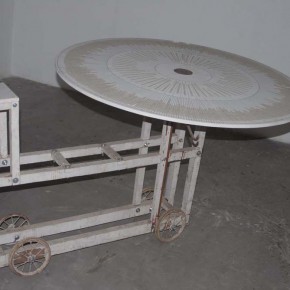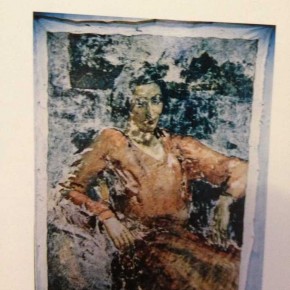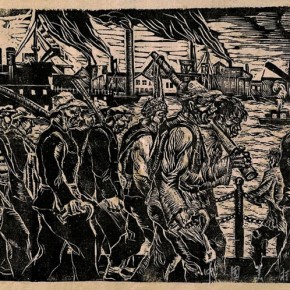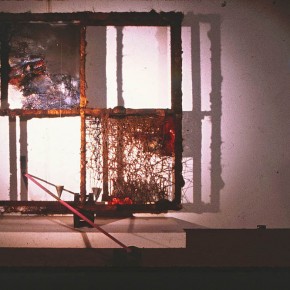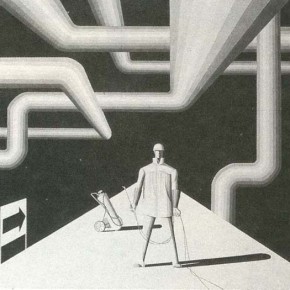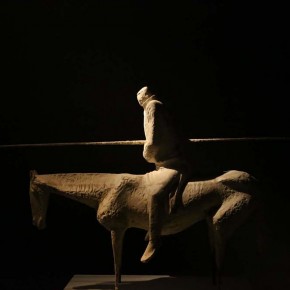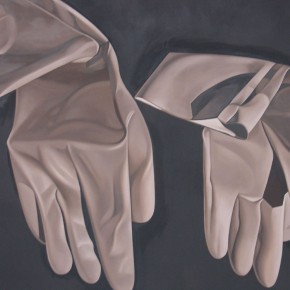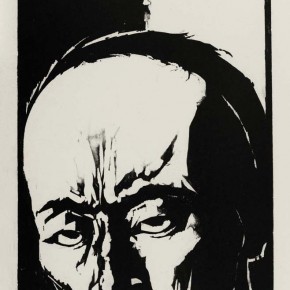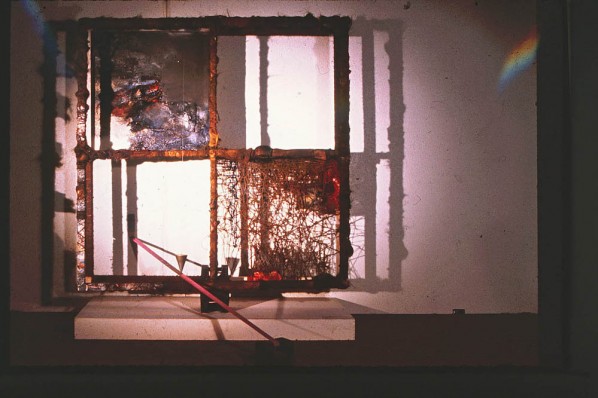
Since the establishment of the National Modern Art Research Center, it has always been committed to the promotion of research, dissemination and spreading of modern Chinese art, actively organizing the related academic projects, with the discovery, collection and arrangement of important modern artistic historical materials. The center organizes the annual academic research exhibition to present the latest research achievements of the 20th century Chinese art, and unfolding related discussions, following in-depth research. The center together with the China Academy of Art and National Art Museum of China launches an academic research exhibition entitled “1985 and an Art Academy” in 2013, which is about to open at the National Art Museum of China on November 22. The exhibition focuses on a series of artistic events which happened at the Zhejiang Academy of Fine Arts in 1985, with works and rich literature that showcase the occurrence and development of new art thought in the academy in the 1980s, to help people change their understanding of ’85 New Wave, through the reconstruction of an historical context, the multi-dimensional reproduction of the historical causes of the artistic trend, depicting an exploration of the historical and social meanings of the art movements, in the overall context of Chinese artistic modernisation.
The exhibition is divided into four sections including “History”, “Controversy”, “Breakout”, and “New Wave”, deeply investigating the artistic ideas and real scenes of the academy ahead of and after 1985. The “History” section looks back to two influential movements which were carried out at the beginning of the establishment of the National Hangzhou Art School (the predecessor of the China Academy of Art) in 1928, firstly Lin Fengmian, former president of the China Academy of Art found the “Art Movement Club”, actively promoting the modern artistic creation and social enlightenment, secondly the “Yiba Art Club (also known as Spring Land Art Institute)” was the backbone of the “New Woodcut Movement”, who had devoted themselves to national salvation and revolution, to greatly promote the creation and development of the Chinese revolutionary literature and art. “Controversy” section starts from the comprehensive report entitled “A Debate of Zhejiang Academy of Fine Arts” which was published in the “Art” vol. 9 in 1985, about to feature a large number of works from the graduate exhibition of Zhejiang Academy of Fine Arts in 1985, as well as the detailed summary of the graduation thesis defenses which caused a sensation across the nation at that time and showcased two distinct views of art and reality in the historical node of 1985. Rich literature and works are presented at the “Breakout” section, to render a series of explorations and experiments that happened inside the academy around 1985, showcasing the “opening” and “lifting a ban” which historically unifies the fate of Chinese art and the experiments based on the academy, how did artists from the academy make use of their creative and experimental spirits to break through from all sorts of conventions, ushering in a new art space. The “New Wave” section presents an art movement which had a wider influence than ever before, and is composed of the Zao Wou-Ki Oil Painting Course, Maryn Varbanov Tapestry Movement, “’85 New Space · Pond Club”, “Xiamen Dada”, “Red Humor”, “The Last Exhibition”, to vividly outline the picture of “’85 New Wave” which originates from Zhejiang Academy of Fine Arts, with a nationwide impact.
Since 1985, one of the most important historical characters of Chinese contemporary art is that it has always been realised and developed around the academies. Among the domestic academies, Zhejiang Academy of Fine Arts has an unique status in the history of Chinese modern art in the 1980s. On the one hand, it is based on the tradition of the “art movement” in the national Hangzhou art school; on the other hand, it was due to the open international vision and profound spirit of criticism, and the academy has adhered to the democratic academic and experimental spirit. Demonstrating this democratic academics and experimental spirit, and showcasing the positive energy is the basic motivation for the exhibition, placing the relationship between 1985 and the art academy into the study for the modern history of art, and launches a discussion on some new issues such as how an academy promotes artistic innovation in the present Chinese artistic cultural context.
The opening of “1985 and an Art Academy” is on the 113th anniversary of the birth of Lin Fengmian, who was the first president of National Hangzhou Art School (the predecessor of the China Academy of Art). Published by the China Youth Publishing House, “Lin Fengmian Talked about Art Collection” and “Lin Fengmian’s Lyrics Collection” will be issued at the same time.
About the exhibition
Organizers: National Modern Art Research Center, China Academy of Art, National Art Museum of China
Curatorial Execution: Contemporary art and Social Thinking Research Institute
Discussion Time: at 15:30 pm on November 22, 2013
Exhibition Dates: November 22 – December 20, 2013
Venue: the 5th floor hall at National Art museum of China
Courtesy of National Modern Art Research Center, translated by Chen Peihua and edited by Sue/CAFA ART INFO.




